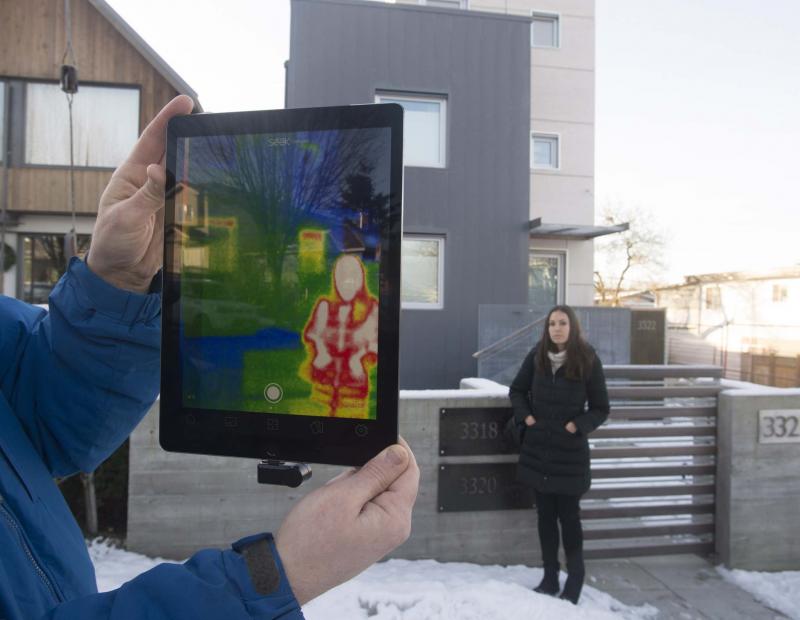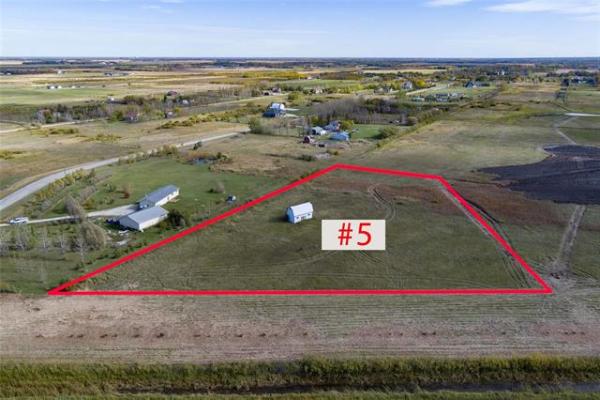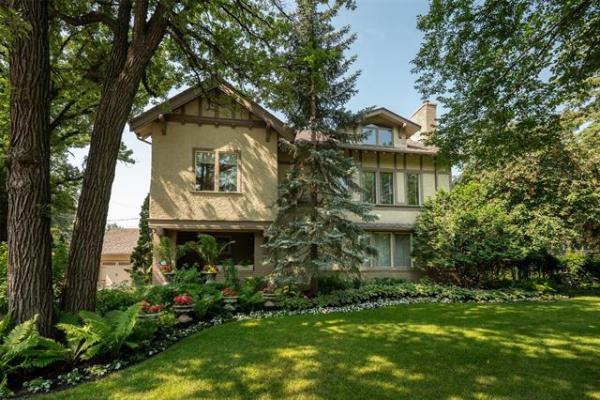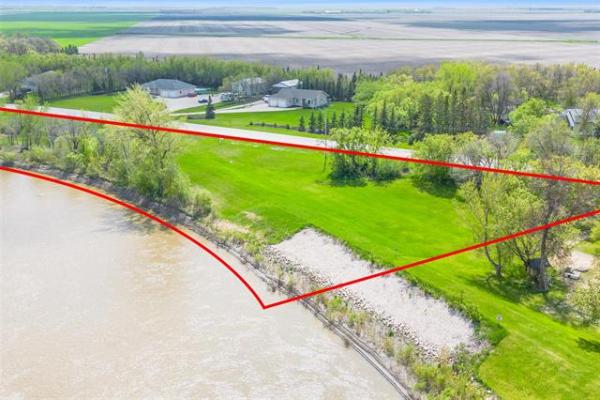Question: Several home inspectors I have contacted have stated they include use of a thermal-imaging camera during their inspections. How does this work and is it of real value for use on a pre-purchase home inspection?
Answer: I have posed this hypothetical question to help clarify something I regularly get asked about by potential clients, mostly when they phone for information on pre-purchase inspection services. It is also because I am quite surprised I have never received this question as a formal request for this column. Thermal-imaging cameras are marvellous diagnostic tools but, as with any job, the tool is only as good as the operator.
Thermal-imaging cameras are very high-tech, handheld units that take digital infra-red images of objects. When the images are displayed, either on the small video screens integrated into the device or a computer screen connected to digital media, they appear in multiple colours.
The colours range from bright yellows and reds, to dark blues and greens. What the different colours portray is the surface temperature of the objects captured. This is critical to remember, because there is a common misconception that these wonderful devices can see behind walls and ceilings, which is not true.
The use of these tools for diagnosing issues in buildings — particularly hidden moisture damage and cold-air infiltration — requires in-depth knowledge of how they work. The basis for much of this knowledge is rooted in very complex thermodynamics, and I will only touch upon the basic theory, which is only as much as I understand.
To fully comprehend the true scientific background of these imaging systems, operators should complete several training and educational courses. Many users will take a basic course when purchasing their thermal-imager and receive a level one thermographer certification.
While the information gained in that course is sufficient to operate and interpret the results of a thermal-imaging camera, it does not make the operator an expert. Almost all of the home inspectors I have met who use one of these devices have only taken this level one course, not the more complex level two and three courses.
The two main applications for thermal-imaging cameras in building inspection or diagnosis are to look for wet, moisture-damaged materials or areas of air leakage. The theory for finding wet materials is quite straightforward. Wet building materials absorb heat easier, or more readily, than dry components. Because energy goes from an area of high energy to that of lower energy, we can use the camera to look for surfaces that are cooler than their surroundings.
A cool surface shows us that heat energy is being drawn from that higher energy area to an adjacent one of lower energy. In other words, a cool, wet area behind a surface will draw heat from that warmer surface, making it colder than its neighbouring components.
In this way, moisture can be detected behind a wall, floor, roof or ceiling because it causes the surface being imaged to appear cool.
Diagnosing air leakage may be even simpler, as cold or warm air intrusion through the exterior of the building will work in the same manner as wet materials. This should be diagnosed by capturing images from both the interior and exterior of the building, taking into consideration the ambient temperatures of both environments, the time of day, and the season.
Unfortunately, there is minimal use in giving a homebuyer this information during a three-hour inspection. There may not be enough time to do a full thermal-image of the building, let alone inspect all the building components required by inspection standards. So, the main benefit of this tool for a home inspector would be to find moisture-damaged building materials.
There are obvious areas of potential moisture intrusion and damage in a home and you don’t have to be a trained home inspector, let alone a thermographer, to know this.
Windows, doors, foundation, and any areas where there are plumbing fixtures are the well-known culprits. Attics and roofs are also potential moisture spots, but the signs of problems in those areas will almost always show up on the interior of the building, so are not normally hidden.
An experienced inspector will know how to look for evidence of moisture issues in bathrooms, kitchens and basements by looking at, testing and probing various components.
Using a thermal-image camera may easily detect moisture damage behind shower walls or around the base of a toilet, but the evidence of those problems will be apparent to a good home inspector. Moisture from leaking toilets will cause the flooring to lift, crack, or stain the area surrounding.
Shower walls that are damaged will have loose tiles and grout, shower surrounds, or move when gently pushed. Basement walls built inside foundations may show signs of stains, rot and damage on the surface, but can still cover up serious cracks or foundation defects.
Unfortunately, an infra-red scan will also not be able to provide conclusive evidence of a foundation problem. In fact, an inexperienced operator may mistakenly diagnose a serious issue, which may turn out to be due to missing or poorly installed insulation.
So, are thermal-imaging cameras an important tool for use in a typical pre-purchase inspection? In my opinion, they are not necessary because there is not enough time to do a proper scan and the operators are typically inexperienced because of this time constraint. A highly experienced registered home inspector should use their knowledge and diagnostic skill, rather than fancy sophisticated tools, to look for defects and issues during a proper pre-purchase home inspection.
Ari Marantz is the owner of Trained Eye Home Inspection Ltd. and the past president of the Canadian Association of Home & Property Inspectors — Manitoba (cahpi.mb.ca). Questions can be emailed to the address below. Ari can be reached at 204-291-5358 or check out his website at trainedeye.ca.
trainedeye@iname.com




